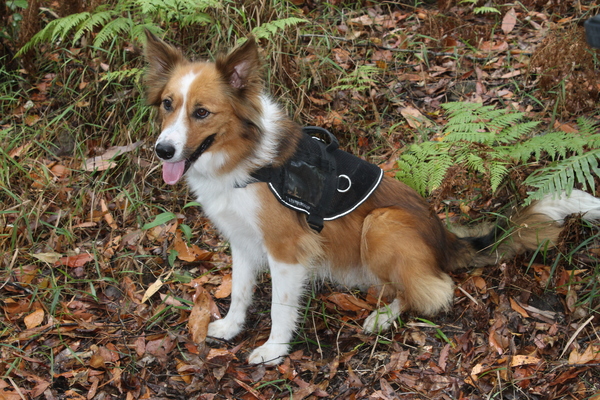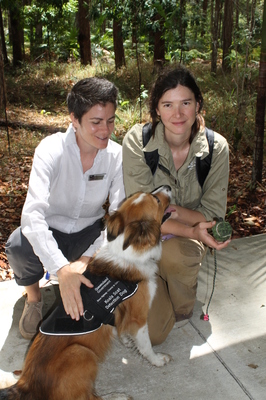BAXTER the border collie will have a new home and role in life, thanks to an innovative koala research programme funded by the Australian and Queensland governments.
Baxter will help the research team gather important information about koalas that can be used to help develop land offsets for infrastructure projects throughout Queensland, but will first start work on the Cooroy to Curra road development.
Federal Minister for Transport and Infrastructure Darren Chester said Baxter was part of a research team based at the University of the Sunshine Coast that would help shape the future design of environmental land offsets to counter-balance impacts of development on koala populations.
“His world class nose is going to be put to good use, sniffing out koala scat to help complete research into selecting land offsets as part of the Section C project (Cooroy to Curra),” he said.
Queensland Main Roads and Road Safety Minister Mark Bailey said the State Government would use the research to improve the design of land offsets for future infrastructure projects.
“Transport and Main Roads has several research projects underway or recently completed in South East Queensland that focus on vulnerable species such as the koala,” Mr Bailey said.
“Findings will help design underpasses and barriers, to help prevent animal death and injury by vehicle strikes.”
Federal Member for Fairfax Ted O’Brien welcomed the four-year old border collie to the team.
“The research into koala populations is being conducted by a local team at USC and will be a valuable part of learning more about the species, their diet and habitat. The work being done here will be put to use on other large infrastructure projects for years to come,” Mr O’Brien said.
“The findings will also be published more broadly, so anyone can use the research to help with their conservation efforts or mitigate impacts to koalas and other wildlife – including developers who can use it to design more successful offsets.”
Geneticist and head of the Detection Dogs for Conservation team at USC Dr Celine Frere said dogs find koala scats more easily than humans and a lot of interesting information could be derived from them.
“In particular, we can determine the genetic fingerprint of koalas. This opens many doors in our understanding of koalas such as their health, the connectivity or fragmentation of the population and even their social structure,” Dr Frere said.
Ecologist and dog handler at USC Dr Romane Cristescu has been training with Baxter for several months.
“The dogs that can graduate as conservation dogs are one in a million. We need dogs that are totally obsessed by their toy – usually a tennis ball – that want to play all day, have very high energy and drive, but at the same time have a soft character and are 100 per cent safe around other animals. This is a very rare combination,” Dr Cristescu said.
The Australian Government has committed up to $307.4 million towards the $384.2 million Section C project, with the Queensland Government providing $76.8 million. The project is expected to be completed in mid-2018, weather permitting and more information about the research program is available at www.tmr.qld.gov.au/cooroytocurra.
Get the latest news to your email inbox FREE!
REGISTER







